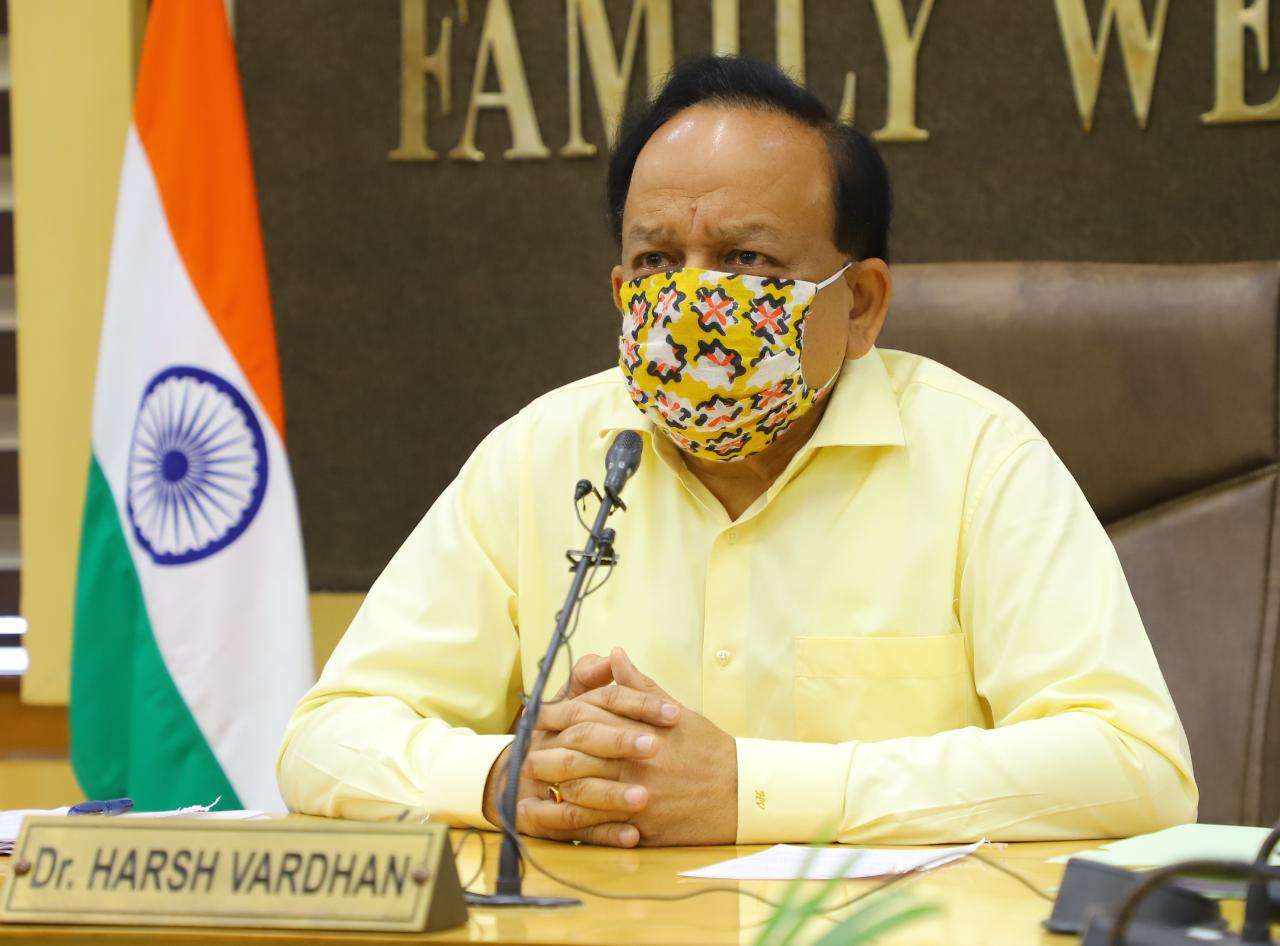Dr. Harsh Vardhan reviews status of Kala Azar in Four States of Uttar Pradesh, Bihar, Jharkhand and West Bengal
New Delhi: Dr. Harsh Vardhan, Union Minister of Health and Family Welfare today chaired an event to review the status of the disease Kala-Azar in the four states of Uttar Pradesh, Bihar, Jharkhand and West Bengal.
Shri Mangal Pandey, Minister of Health, Bihar, Ms. Chandrima Bhattacharya, Minister of State for Health and Family Welfare, West Bengal, Shri Jai Pratap Singh, Minister of Medical and Health, Family Welfare, Mother and Child Welfare, Uttar Pradesh and Shri Banna Gupta, Health, Medical Education & Family Welfare, Jharkhand were also present in the event.
The Union Health Minister started by reminding the audience that the Government of India is strongly committed to the elimination of Kala Azar. He stated “Kala Azar is the 2nd largest parasitic killer in the world after Malaria and results in a 95% fatality rate if the patients are not treated. Additionally, up to 20% of the patients who are correctly treated and cured, develop a skin condition called Post-Kala-Azar Dermal Leishmaniasis (PKDL) which surfaces within months to years after treatment. These patients can contain large amounts of parasites in their skin lesions, making them an important source of transmission.” He was apprised that there are 54 districts in four states namely Bihar, Jharkhand, Uttar Pradesh, and West Bengal that are currently affected by Kala-azar with sporadic cases in other states like Assam, HP, J&K, Kerala, Sikkim, and Uttarakhand.
Speaking on the gains made in elimination of Kala Azar, he noted:
As of 30th November 2020, only 12 blocks in Jharkhand and 4 blocks in Bihar have reported more than 1 case per 10,000 population.
Bihar which has traditionally had a large burden of Kala-azar has achieved elimination target in almost all except 4 blocks located in districts of Siwan and Saran (out of 458 blocks).
Jharkhand too has made significant progress both in reduction of Kala-azar and PKDL cases, as well as in number of blocks reporting more than 1 case per 10,000 population.
Uttar Pradesh and West Bengal have achieved their elimination target and needs to be more vigilant and diligent to consolidate and sustain their gains;they will earn the Elimination Certificate at the end of 3 years.
Appealing to all the District Magistrates and their officers at the district and block/level that are still reporting more than 1 case per 10,000 populationto take some time out of their schedule for a regular review of Kala-azar and to help the district teams in overcoming the issues coming in the way of elimination target, Dr. Harsh Vardhan said, “A risk based stratified approach needs to be formulated with clear activities and responsibilities that come with measurable monitoring indicators.Kala Azar disproportionately impacts the people at lower socio-economic strata of societywhose houses are not sprayed often. In addition, they are unable to apply for pucca houses since they don’t own land.”
In this respect, he underlined the importance of the following activities to target the elimination of the disease:
Development of a plan for the “unreached poorest” or underprivileged sections in endemic areas.
Leveraging ofKala-azar elimination programme within POSHAN Abhiyaan for maximum benefit at community level.
Exploration of the opportunity of providing improved housing under the flagship program of the Prime Minister Awas Yojana-Gramin (PMAY-G). (The Minister added that Jharkhand has made good progress on this front).
Exploration of the opportunity of providing improved housing under State Schemes, as has been done by Jharkhand under Birsa Munda Awas Yojana and Bhimrao Ambedkar Awas Yojana.
Involvement of Rural Health Practitioners (RHPs) who are often used as the first point-of-care in referral, surveillance, and IEC.
Co-ordination with the rural development department and engage with Panchayati Raj functionaries for awareness, community engagement, environment management and social empowerment.
Focusing on IEC messages on prolonged fever, associated symptoms and free access to diagnosis and treatment, proper use of ITN/LLINs, and compensations/incentives.
Dr. Harsh Vardhan explored possible solutions in this regard like sensitization of the population, proper training of human resource, quick completion of Prime Minister’s dream of ‘Housing for All’ by 2022, strengthening adverse drug reaction reporting system, both for Kala-azar and PKDL with special focus on PKDL cases with eye complications, institutional management of Kala Azar/HIV cases at the district level,etc.
Dr. Roderico Orfin, WHO representative to India also graced the occasion.
Ms. Rekha Shukla, Jt. Secretary (NVBDCP) and other senior officials of the Health Ministry were present. Senior government officials serving the various States and UTs joined digitally.

